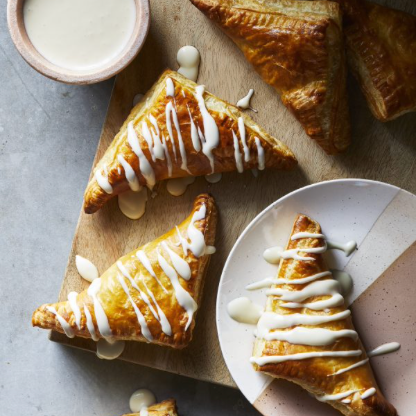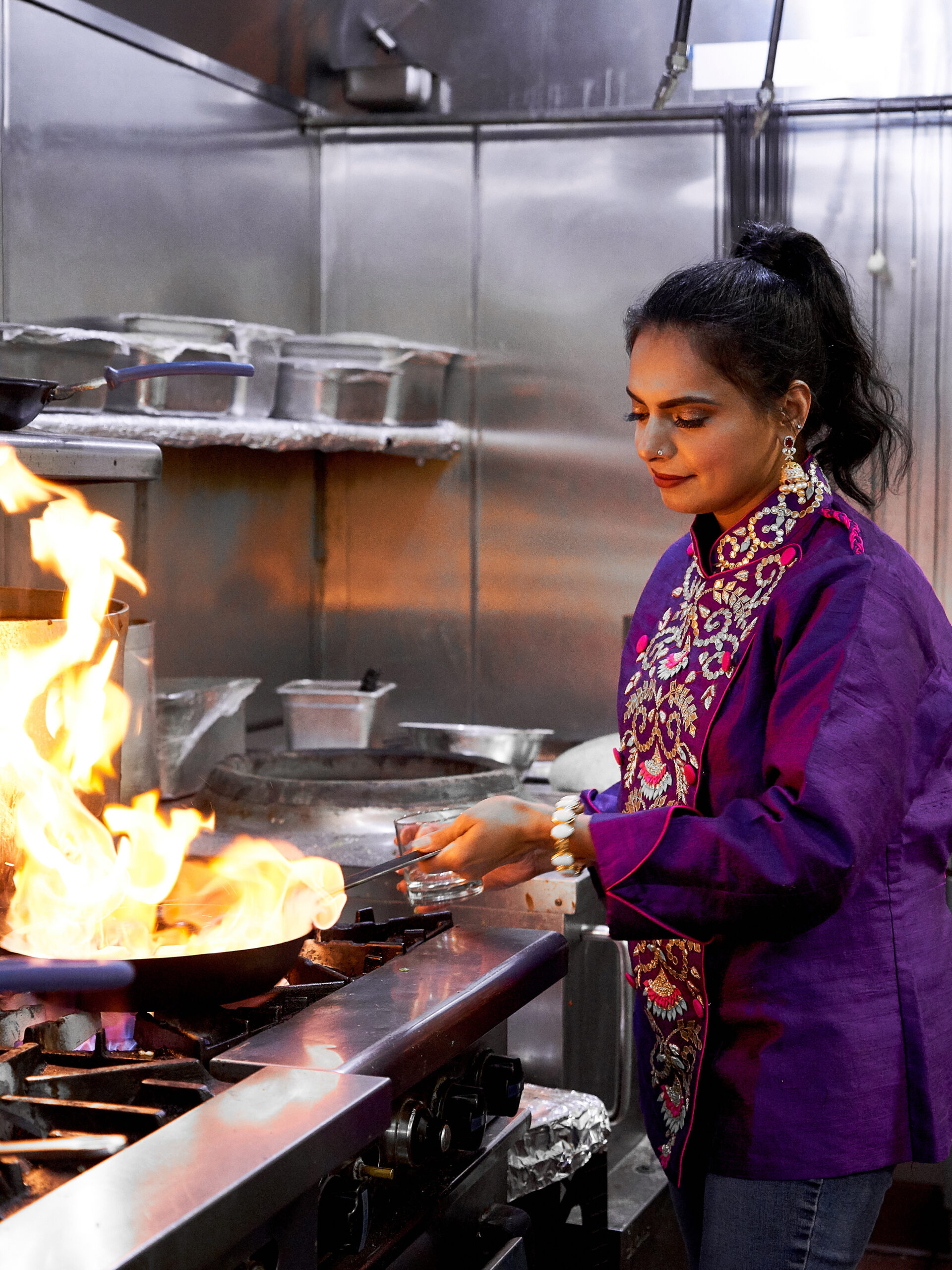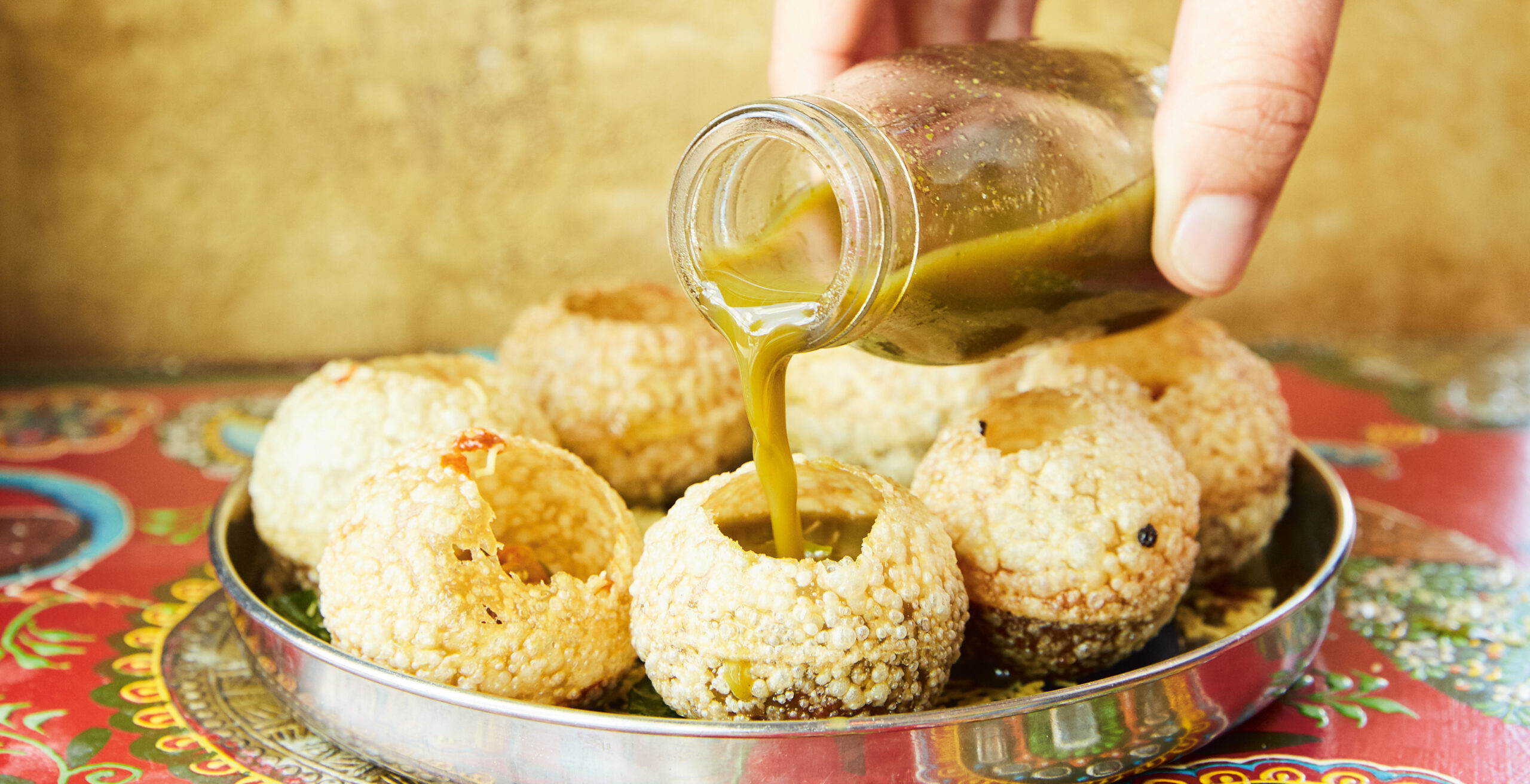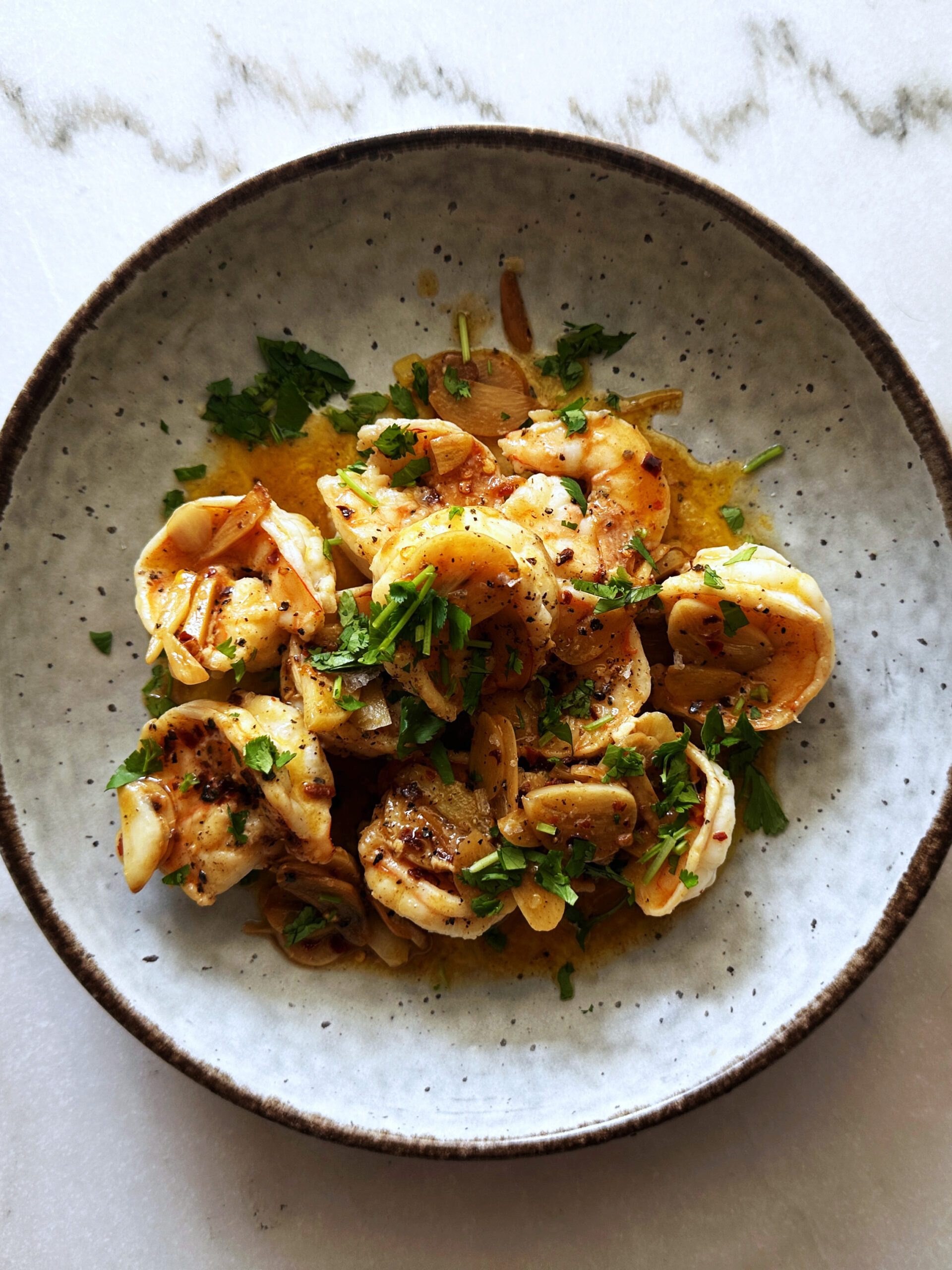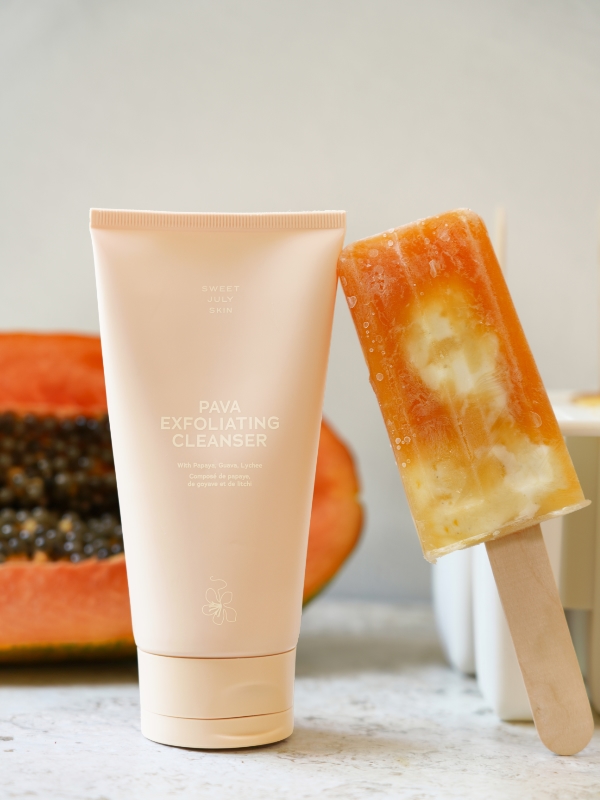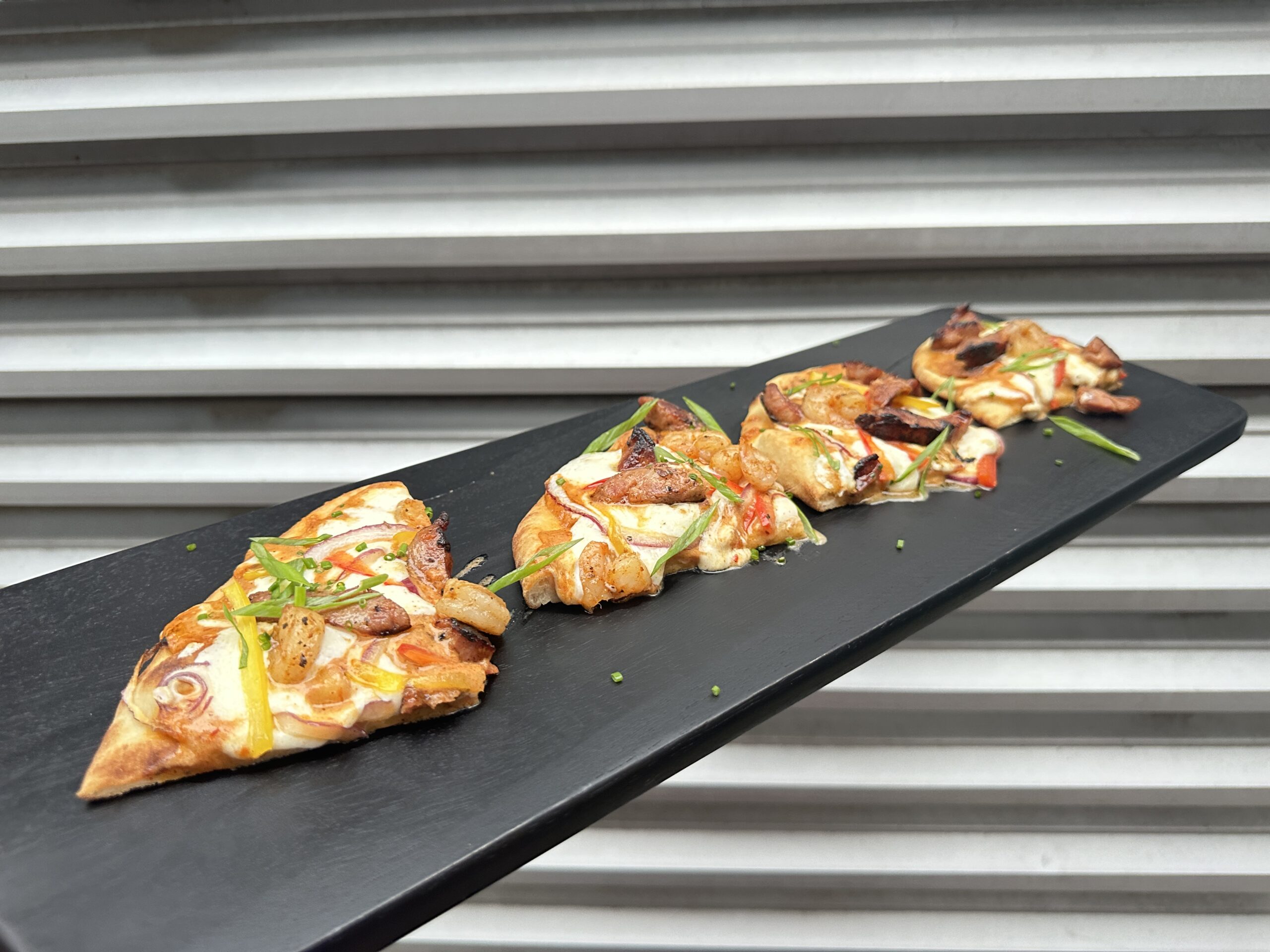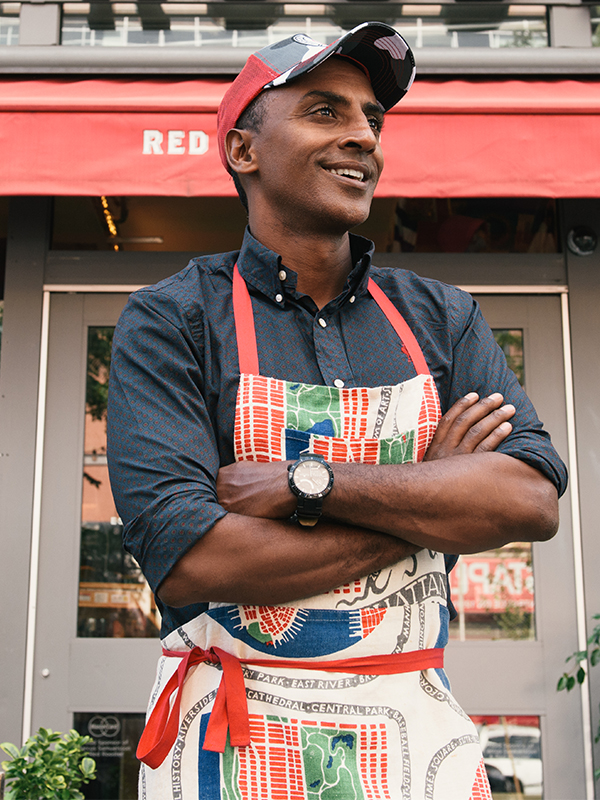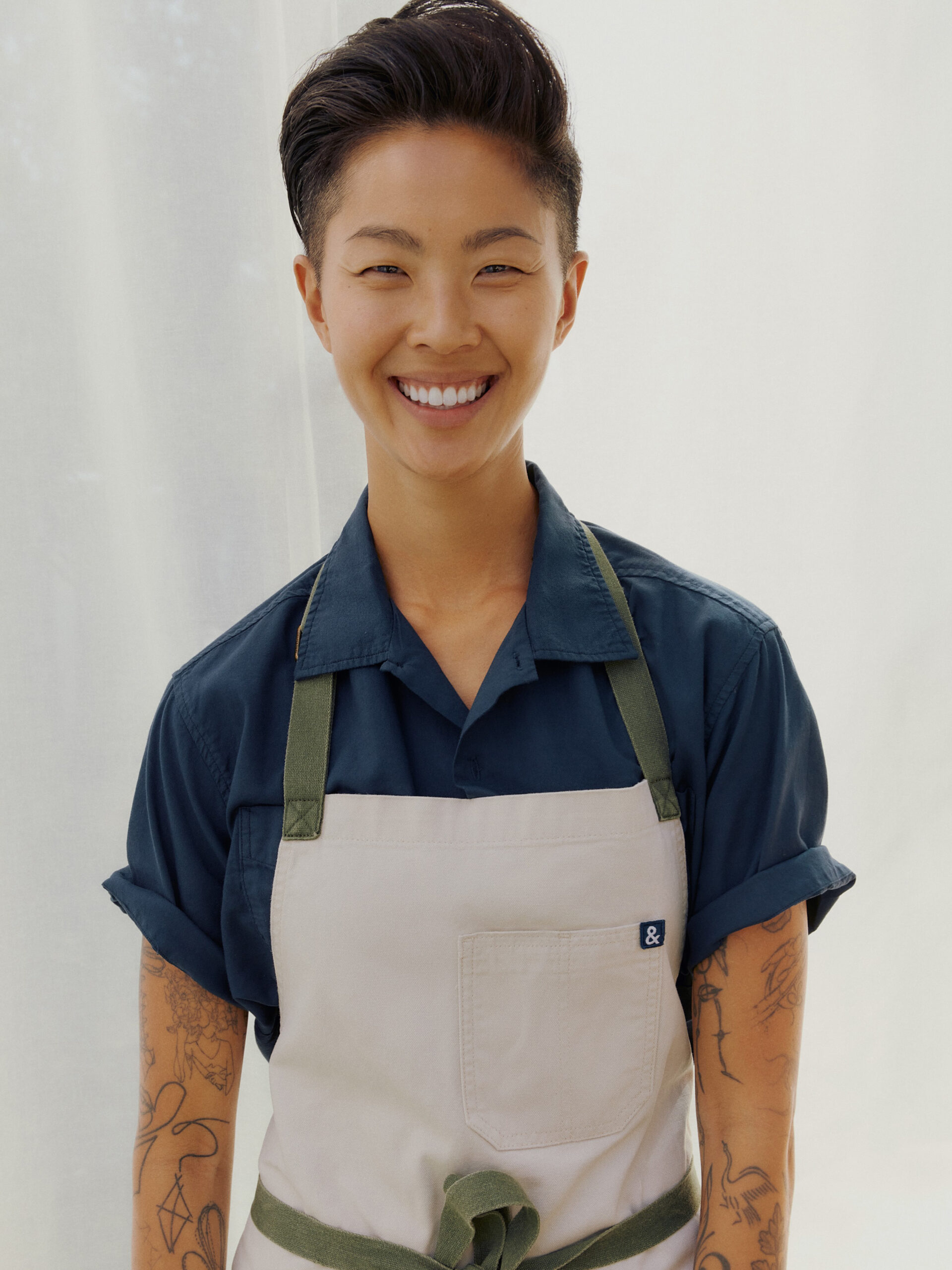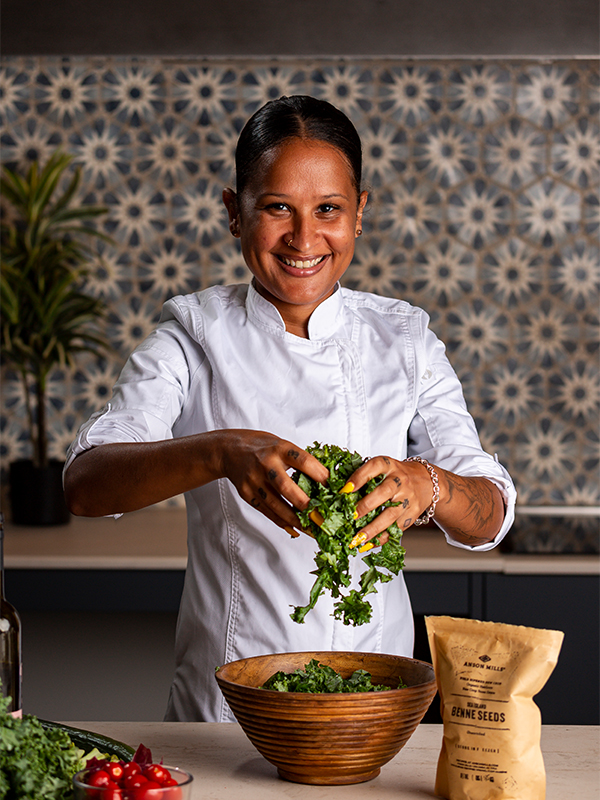Chef Maneet Chauhan acquired her love of food on trains. Growing up in India, the Chopped judge would often travel with family, stopping at local stations and trying the different foods there. Usually it was snacks called chaat, which in Hindi means “to lick.”
Chauhan tells Sweet July, “I got to get a glimpse of the amazing diversity of Indian cuisine by being on trains. These trains aren’t like the ones over here [in the States]. The windows are open, the doors are open. It would be a journey of two days and three nights. And at each and every small local station, the vendors would sell their wares, food unique to the culinary traditions of that region.”
Chaat happens to be the name of Chauhan’s cookbook; she defines the word as “almost anything that is so good you find yourself licking the palm leaf or banana leaf that it was served on.” The book is separated by region, mimicking the feeling Chauhan had as a child traveling and sampling all the food India had to offer.
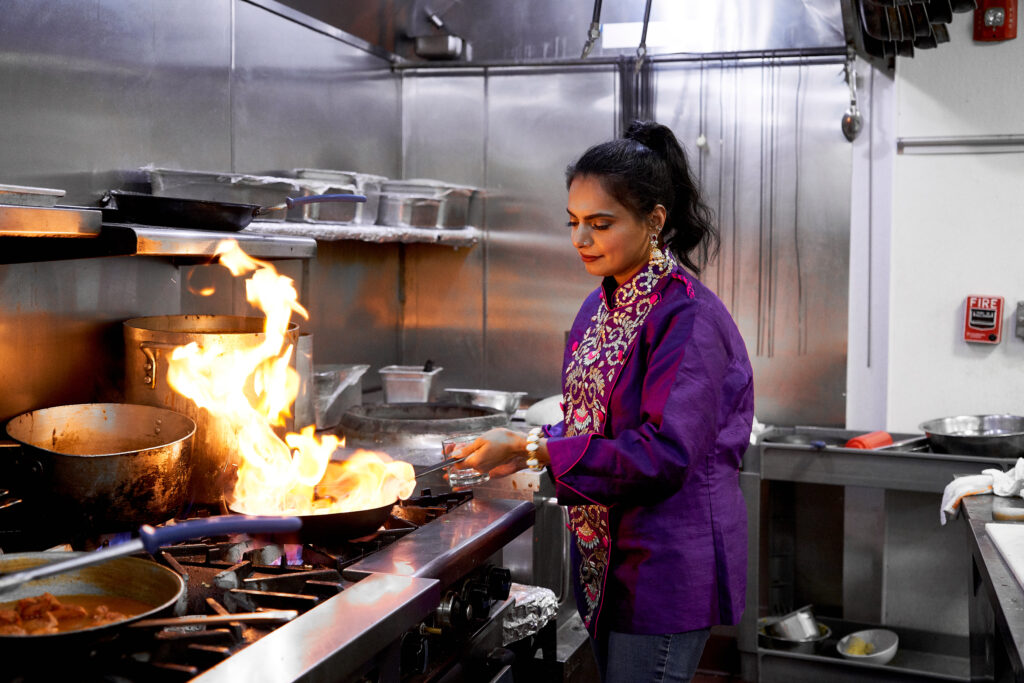
One of Chauhan’s favorite chaats is puchkas, also called pani puri or golgappas. A puri is a light airy fried ball of semolina with a hole pushed in, stuffed with vegetables like potatoes. Then, an herbal, spicy water that tastes of tamarind chutney and chaat masala with kala namak (black salt, with a delicious sulfur taste) is poured over the puris and they’re eaten instantly.
Pani puri is a quintessential Indian street food, partially because the herbal water makes it so you have to pop them into your mouth almost immediately. But in Chaat, Chauhan shows you how to make the delicacy in the comfort of your own home, along with other favorites like kashmiri kahwa tea with saffron.
Street food is one of the best ways of showing a fresher, simpler, lighter version of South Asian food than many in North America are used to. While biryanis and mattar keemas and silky paneers are delicious, they’re but a mere glimpse into one of the most diverse food regions in the world. For Chauhan, chaat is one of the best ways to show this. It’s a lens that has changed the way she engages as a judge on Chopped, where contestants create dishes out of ingredients that can sometimes feel dissonant, just like the chile and tamarind-flavored water poured over fried semolina and potatoes. “It gives you a completely different flavor palette and profile because this is what you’ve grown up with—different foods blended together and spices being maximized,” says Chauhan about being a South Asian judge on Chopped.
With Chaat, you can make meals for yourself and your family or you can throw what Chauhan calls “chaat parties,” where your guests participate in the making with you. It’s a fun bonding experience, where people learn about South Asian food and its regions, from Hyderabad to Goa, Kolkata to Mumbai, Chennai to Kerala. “People love the chaat party,” says Chauhan. “They love the fact that they’re making it themselves and that no matter what combination you make, it is still delicious.”
If you want to try your own chaat party, Chauhan has one crucial piece of South Asian advice: know what to do with your spices. “You have to steep saffron, bloom turmeric, toast coriander. Those little steps alone take your chaat from bland to superb.”
And no chaat is complete without pani puris. To me, they taste like the sea, a perfect amalgamation of every good flavor in one bite. “It’s sensory overload,” says Chauhan. “It’s one bite, which is solid and liquid, and it’s cold and crunchy, and crispy and sweet and tart and spicy. It’s just a lot happening in a bite but I have actually never come across anybody who hasn’t liked it. It’s just a matter of taking the first bite.” Chauhan also shares a special trick she uses with the panipuri water. “I make margaritas out of it.”
Get Chauhan’s recipe for Pani Puri below!
Plus: Looking for the perfect wine to pair with this dish? Sweet July’s wine consultant Julia Coney recommends Chardonnay. Coney says, “The most planted grape in the world often gets a bad rap depending upon the style it’s made, but Chardonnay from cool climate regions has such elegance and energy; it is a perfect match for these rich flavors.”
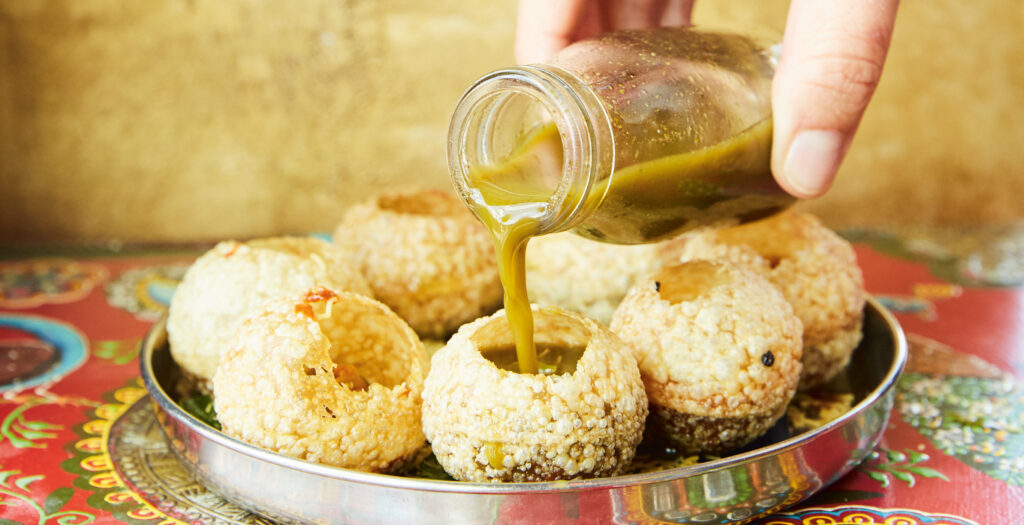
RECIPE:
Puchkas (Pani Puri)
Makes about 32 puchkas
Preparation Time: 1 hour
INGREDIENTS
Puris
2 cups semolina
2 tablespoons all-purpose flour, plus more for rolling
½ teaspoon baking soda
½ teaspoon kosher salt
Vegetable oil, for deep-frying
Spicy Water (Teekha Pani)
5 green chiles, coarsely chopped
1 cup lightly packed fresh cilantro leaves
½ cup lightly packed fresh mint leaves
1 tablespoon tamarind paste
2 teaspoons ground cumin
2 tablespoons coarsely chopped jaggery (or 2 tablespoons packed, dark brown sugar)
2 teaspoons chaat masala
Puchkas
2 russet potatoes, boiled, peeled, and finely chopped (they need to be small enough to fit inside the puri)
1 cup finely chopped, cooked chickpeas
3 tablespoons tamarind chutney, store-bought or homemade
2 tablespoons Green Chutney
1 tablespoon chaat masala
½ teaspoon Kashmiri or other red chile powder
Salt
INSTRUCTIONS
In a large bowl, sift together the semolina, all-purpose flour, baking soda, and salt.
Add 3 tablespoons cold water and stir with your hands until a dough begins to come together. Add more water, 2 tablespoons at a time, until a firm but elastic dough is formed (you’ll likely use about ⅔ cup water).
Lightly oil the bowl you first used to make the dough and return the dough to the bowl.
Cover the bowl with a damp cloth and let it rest for 30 minutes. It’s important to keep the dough from drying out or the puris will not puff up when they’re fried.
Line a plate with paper towels.
Pour 6 inches oil into a heavy-bottomed pot and heat over high heat to 325°F on an instant-read thermometer. Add a tiny piece of test dough; it should immediately rise to the surface of the oil.
Lightly flour a clean work surface. Working quickly, roll one-third of the dough into a ⅛-inch-thick sheet. Keep the remaining dough covered with a damp cloth.
Use a 2-inch round biscuit or pastry cutter to cut out rounds that are very close together. Slide an offset spatula beneath a round to release it from the work surface and carefully lower it into the hot oil (do not overcrowd the pot or the puris will not puff and cook properly).
The puris should rise to the surface of the oil almost immediately. Using a slotted spoon, gently push them down into the oil as they fry to ensure that they puff up properly and color evenly. They should puff up after 1 to 2 minutes. Once they puff and turn a light golden brown, transfer them to the paper towels to drain.
Repeat the process with the remaining dough until all the puris have been fried. Allow the oil to return to frying temperature between batches.
Cool the puris to room temperature and then either store them in a single layer in a covered container at room temperature or, if using immediately or sometime soon, use your thumb to punch a small hole into the top of each puri to prepare it for the stuffing and spicy water. (I use my index finger to do this, but your thumb or the handle of a wooden spoon also works, too.)
Make the spicy water (teekha pani): In a blender, combine the chiles, cilantro, mint, tamarind, cumin, jaggery, and 4 cups water and puree at high speed until smooth. Transfer to a bowl and stir in the chaat masala. Strain into a pouring vessel that enables you to neatly pour the liquid through the hole and into the puri.
For the puchkas: In a medium bowl, stir together the potatoes, chickpeas, tamarind chutney, green chutney, chaat masala, chile powder, and salt to taste.
Spoon a small amount of the potato mixture into each puri. Pour the spicy water into the puri until it is filled by two-thirds and immediately pop it into your mouth—or someone else’s!





